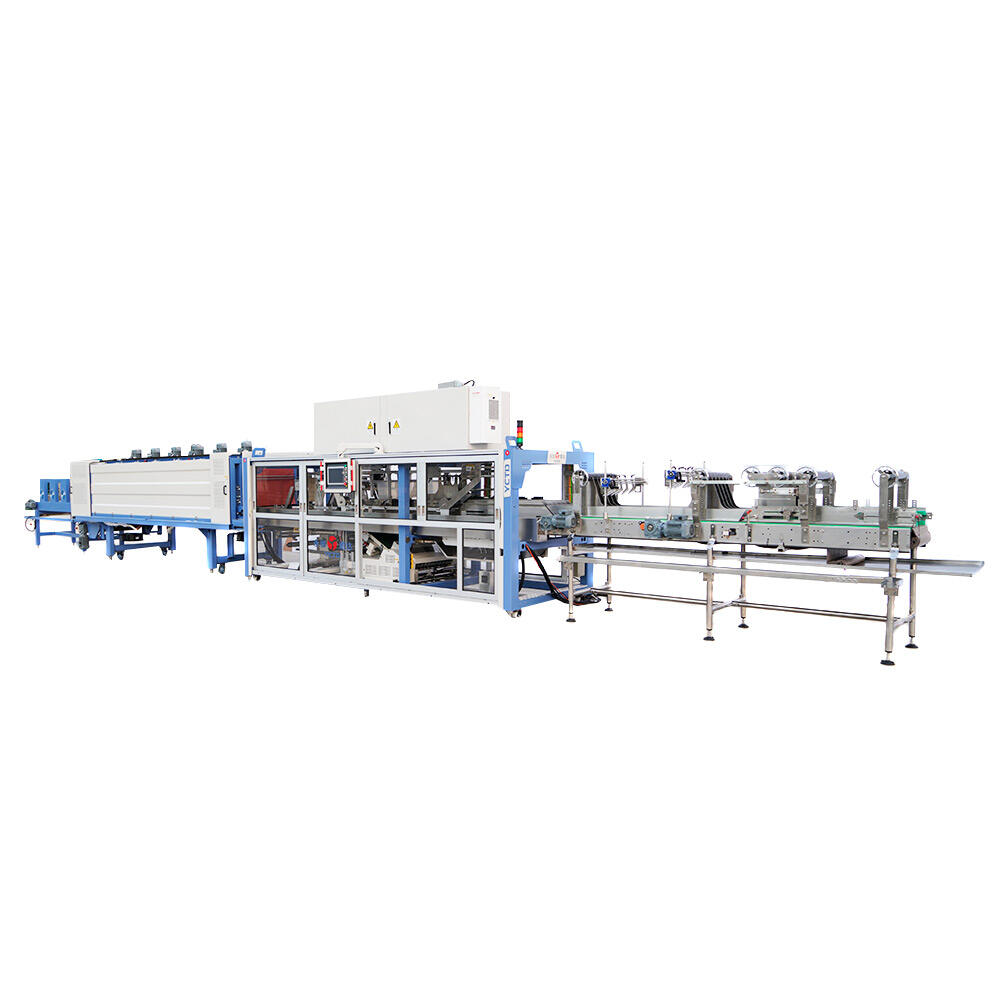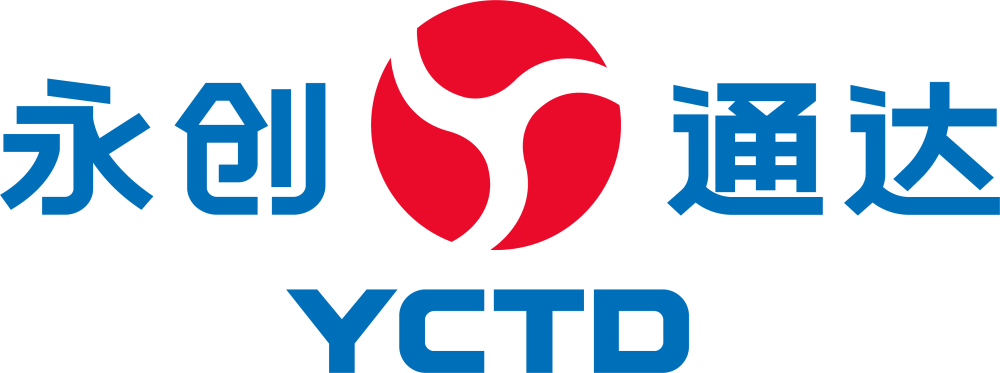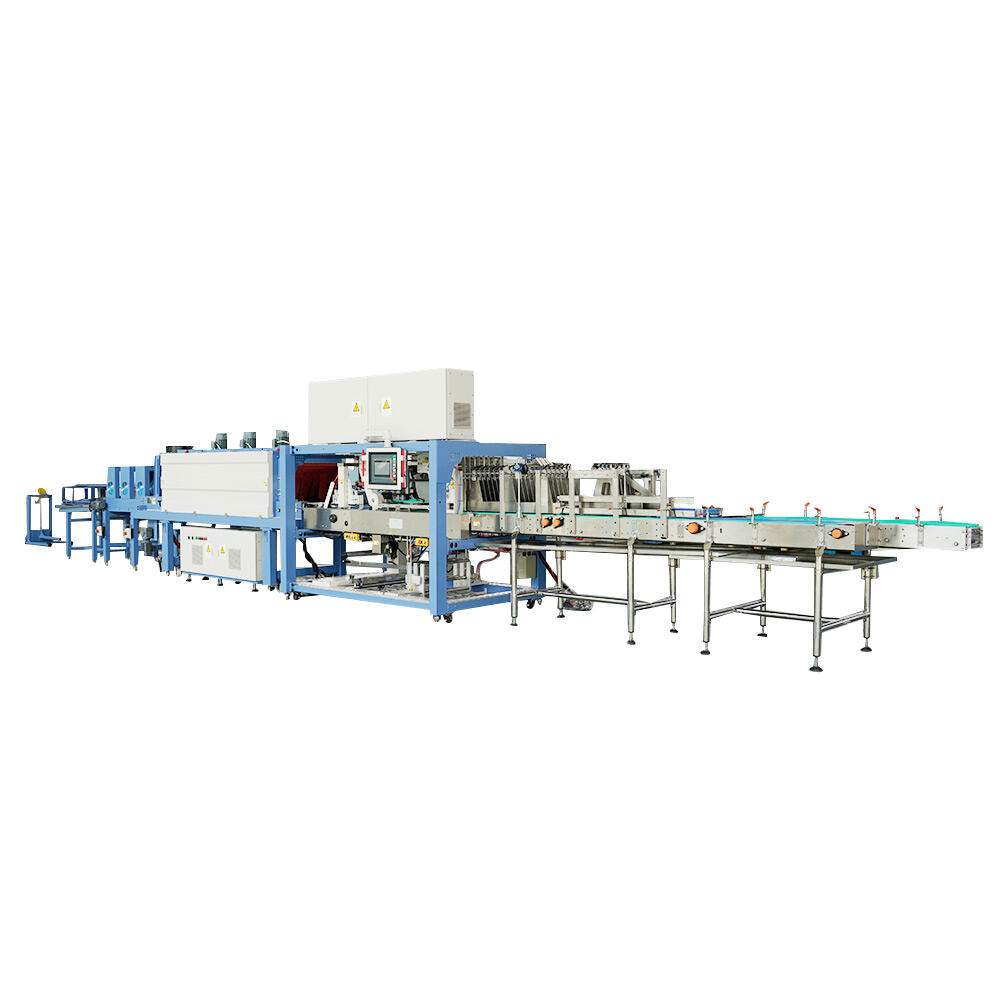Transforming Packaging Efficiency with Advanced Case Packing Technology
In today's fast-paced manufacturing environment, the efficiency of packaging operations can make or break a company's productivity and profitability. At the heart of modern packaging lines, the case packer stands as a revolutionary piece of equipment that has fundamentally changed how products are prepared for distribution. These sophisticated machines have become indispensable in industries ranging from food and beverage to pharmaceuticals, offering unprecedented levels of speed, precision, and reliability in packaging operations.
The evolution of case packing technology represents a significant leap forward from manual packaging methods, which were not only time-consuming but also prone to human error and inconsistency. Modern case packers can handle hundreds of products per minute while maintaining exceptional accuracy and protecting product integrity throughout the process. This transformation has allowed companies to meet increasing market demands while optimizing their operational costs and maintaining high quality standards.
Core Components and Functionality of Modern Case Packers
Mechanical Systems and Control Infrastructure
The foundation of any case packer lies in its sophisticated mechanical systems. These include product infeed conveyors, case erectors, product collation mechanisms, and precise placement systems. The integration of servo motors and advanced control systems ensures smooth, coordinated movements throughout the packaging process. Each component works in perfect synchronization, guided by sophisticated programming that can adjust operations in real-time based on production requirements.
Modern case packers utilize state-of-the-art PLC (Programmable Logic Controller) systems that oversee every aspect of the operation. These controllers manage timing, speed, and position with millisecond precision, ensuring that products are handled gently yet efficiently. The implementation of HMI (Human Machine Interface) screens provides operators with intuitive control over the entire system, allowing for quick adjustments and monitoring of key performance metrics.
Product Handling and Case Formation
The product handling capabilities of a case packer are engineered to accommodate various item sizes, shapes, and packaging materials. Specialized grippers, vacuum systems, and robotic arms work together to carefully manipulate products without damage. The case formation process involves precise folding and sealing mechanisms that ensure each case is properly erected and prepared for product loading.
Advanced sensors and vision systems monitor the entire process, detecting any anomalies in product orientation or case formation. This constant surveillance helps maintain quality control and prevents jams or product damage. The ability to handle multiple product configurations and case sizes with minimal changeover time has made case packers extremely versatile in modern manufacturing environments.

Operational Benefits and Performance Metrics
Speed and Throughput Optimization
One of the most significant advantages of implementing a case packer is the dramatic increase in packaging speed. These machines can achieve throughput rates that would require multiple shifts of manual labor to match. Modern case packers can handle anywhere from 15 to 200 cases per minute, depending on the model and application. This exceptional speed is maintained consistently throughout production runs, without the fatigue or variation that affects human operators.
The high-speed operation is complemented by smart acceleration and deceleration profiles that protect products during handling. Advanced case packers can adjust their speed based on upstream and downstream conditions, ensuring optimal flow throughout the packaging line. This intelligent speed control helps prevent bottlenecks and maintains consistent production rates.
Accuracy and Quality Assurance
Case packers excel in maintaining precise product placement and consistent case packing patterns. The integration of vision systems and quality control sensors ensures that every case meets strict quality standards. These systems can detect missing or damaged products, incorrect orientations, and improperly sealed cases, automatically rejecting any packages that don't meet specifications.
The improvement in accuracy has a direct impact on customer satisfaction and brand reputation. Properly packed cases are less likely to suffer damage during shipping, and consistent packaging patterns make warehouse handling more efficient. The reduction in product damage and returns provides significant cost savings while building customer trust.
Integration and Industry Applications
Seamless Production Line Integration
Modern case packers are designed to integrate seamlessly with existing packaging lines. They can communicate with upstream and downstream equipment through various industrial protocols, creating a synchronized production environment. This integration extends to warehouse management systems and production planning software, allowing for real-time tracking and adjustment of packaging operations.
The ability to interface with other equipment has made case packers central to Industry 4.0 initiatives. They can provide valuable data about production rates, efficiency, and maintenance needs, contributing to overall equipment effectiveness (OEE) improvements. This connectivity enables predictive maintenance strategies and helps optimize entire packaging operations.
Industry-Specific Adaptations
Case packers have evolved to meet the specific requirements of different industries. In the food and beverage sector, they incorporate sanitary design principles and can handle varying product temperatures and moisture levels. Pharmaceutical applications require validated systems that ensure product traceability and compliance with stringent regulations. Consumer goods manufacturers benefit from the flexibility to handle multiple product sizes and packaging configurations.
The adaptability of modern case packers extends to their ability to handle sustainable packaging materials, including lighter weight corrugated cases and recyclable materials. This versatility helps companies meet their environmental goals while maintaining efficient operations.
Future Trends and Technology Advancements
Artificial Intelligence and Machine Learning Integration
The future of case packing technology is being shaped by advances in artificial intelligence and machine learning. These technologies enable case packers to optimize their operations autonomously, learning from historical data to improve efficiency and reduce downtime. AI-powered systems can predict maintenance needs, adjust to varying product conditions, and optimize packing patterns in real-time.
Machine learning algorithms are being developed to enhance the flexibility of case packers, allowing them to handle new product types with minimal reprogramming. This adaptability is crucial in industries where product lifecycles are shortening and packaging variations are increasing.
Sustainable Operations and Energy Efficiency
As environmental concerns become more pressing, case packer manufacturers are focusing on developing more energy-efficient systems. New designs incorporate regenerative drives, smart power management, and materials that reduce environmental impact. These improvements not only benefit the environment but also help reduce operating costs.
The integration of sustainable practices extends to the ability to handle eco-friendly packaging materials and optimize case sizes to reduce material waste. Future case packers will play a crucial role in helping companies achieve their sustainability goals while maintaining productive operations.
Frequently Asked Questions
What maintenance requirements do case packers typically have?
Case packers require regular preventive maintenance, including lubrication of moving parts, inspection of wear components, and cleaning of sensors and control systems. Most modern machines have built-in maintenance schedules and monitoring systems that alert operators when service is needed. Following manufacturer-recommended maintenance procedures can significantly extend equipment life and maintain optimal performance.
How do case packers handle different product sizes and configurations?
Modern case packers are designed with quick-change tooling and programmable settings that allow for rapid changeover between different product sizes and case configurations. Many systems feature automatic adjustment capabilities that can modify handling parameters based on pre-programmed recipes. This flexibility enables efficient handling of various product lines while minimizing downtime for changeovers.
What factors should be considered when selecting a case packer?
Key considerations include production speed requirements, product characteristics, available floor space, integration requirements with existing equipment, and future expansion plans. Other important factors are the level of automation desired, maintenance support availability, and total cost of ownership. Working closely with equipment manufacturers to evaluate these factors ensures selection of the most appropriate case packer for specific operational needs.

